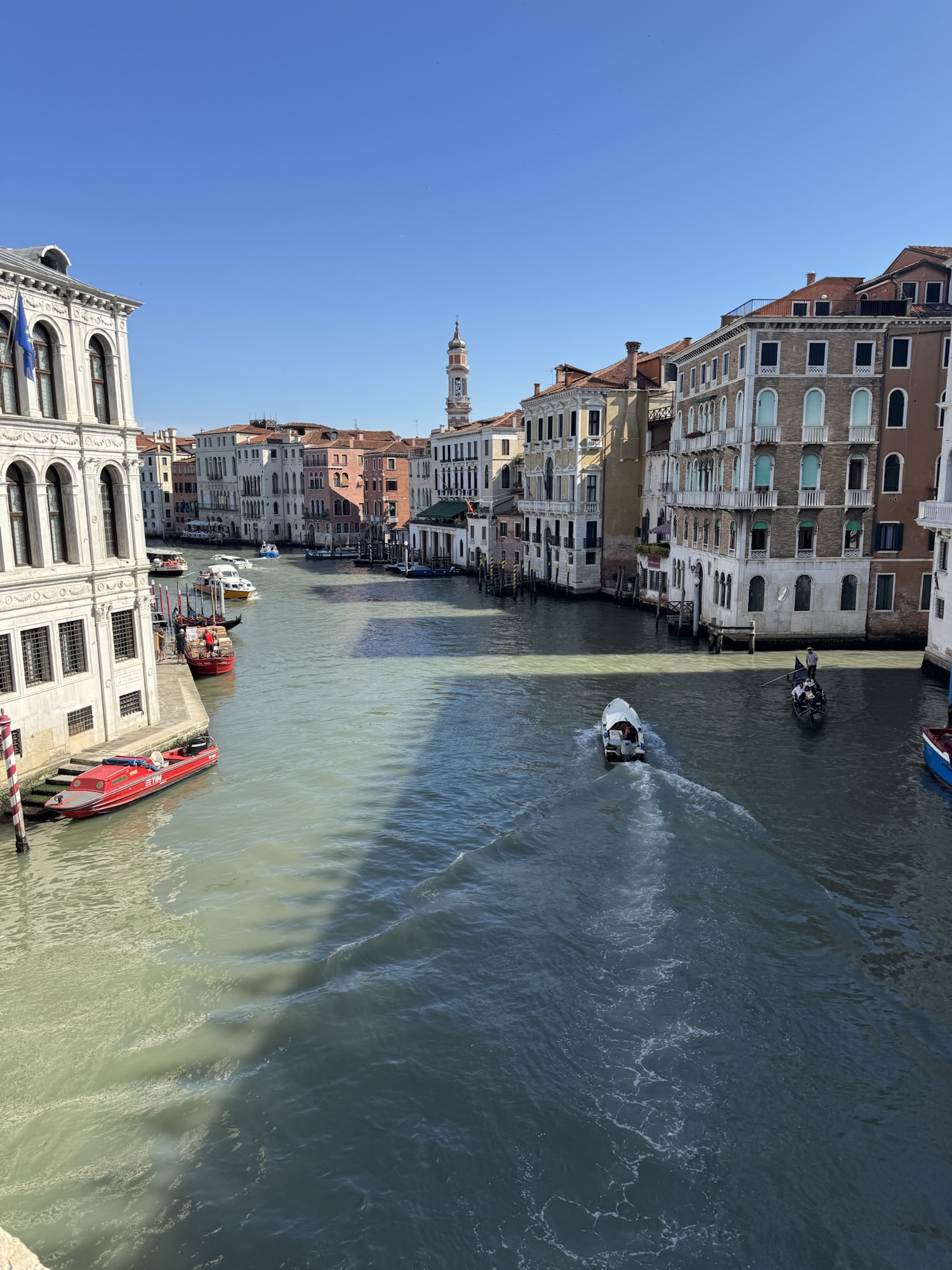Day 2 of our Greek Island Travel Devotional Tour was our first full day in Venice. We worked according to a plan, albiet a loose one, recognizing the Lord’s form/freedom pattern for creation, and being mindful of The Wife’s reminder that she does not like to be “yanked around.”
The beauty of Venice
We began the day by walking the paths and alleyways — they cannot properly be called streets because they are too narrow and there are no cars–from our hotel to the Rialto Bridge. Part of the charm of Venice is the absence of streets and cars, which are replaced by canals and boats.
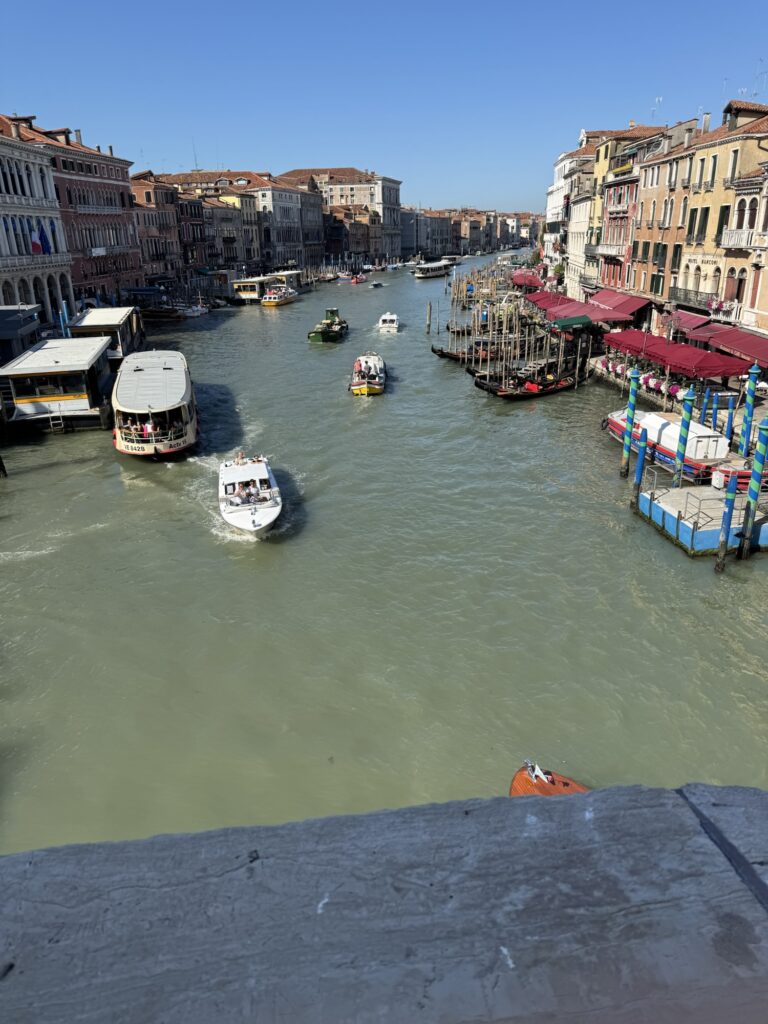

Venice is a Disney World for adults, with its cafes, restaurants, shopping, and the iconic beauty of the gondola laden canals snaking through the medieval buildings, only it is all real. Venice is Exhibit A of what fallen man manifesting the image of his Creator can create on a good day.
The first church in Venice
Our first stop was San Giacomo di Rialto, the first church in Venice, which was consecrated in 421A.D. after mainlanders had fled here to escape the invading Goths and later Attila the Hun.
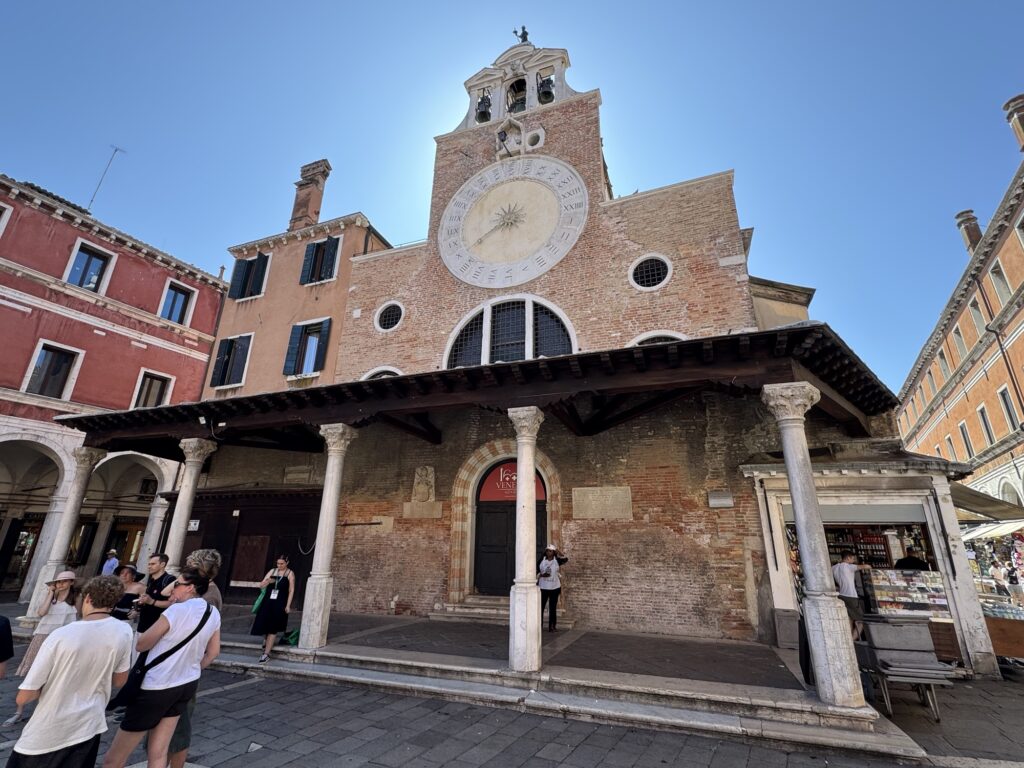
The church is small and modest but supported inside by thick columns that suggest it was built to stand for some time, as it has.
As I explored San Giacomo di Rialto, The Wife wondered off toward the shops, only to text me later that she had found some great shops and “had done some damage.” In the Middle Ages, damage was done with a sword; in modern day it is done with a credit card. So, I texted her not to move, so I could come to where she was and rescue her from herself.
We had planned to meet up with rest of the GSB team, who was arriving today, at St. Mark’s Square, so that is where we went next. By the time we got there we both hot, really hot, and feeling borderline unwell.
So, we quickly found an air conditioned cafe, where we hydrated ourselves back from the edge of heat exhaustion and vowed not to return to Venice in the summer.
St. Mark’s Basilica
After connecting for the first time on the tour with the rest of the GSB team we got in line to see the main event, what we had come to see, St. Marks Basilica, one of the most famous and iconic churches in the world and the keeper of the bones of St. Mark, the writer of the Gospel of Mark.
After a moderate wait in the hot early afternoon sun we arrived at the entrance only to have Elisheba denied entrance because her shoulders were exposed.
This is one of the anachronisms of European cathedrals and basilicas. They are essentially museums, but many will not let women enter if their knees are exposed or shoulders are bare, even when there is no church service in progress, “out of respect.”
I guess they mean respect for God, but I don’t think God is offended by bare shoulders and kneecaps. I suspect He is more offended by a soulless religiosity which confuses a medieval building with the Church.
The rest of the GSB team, save Brohead, who did the right thing by staying outside with his wife, decided we must press on. There were still four of us left to complete the quest to see the bones of St. Mark.
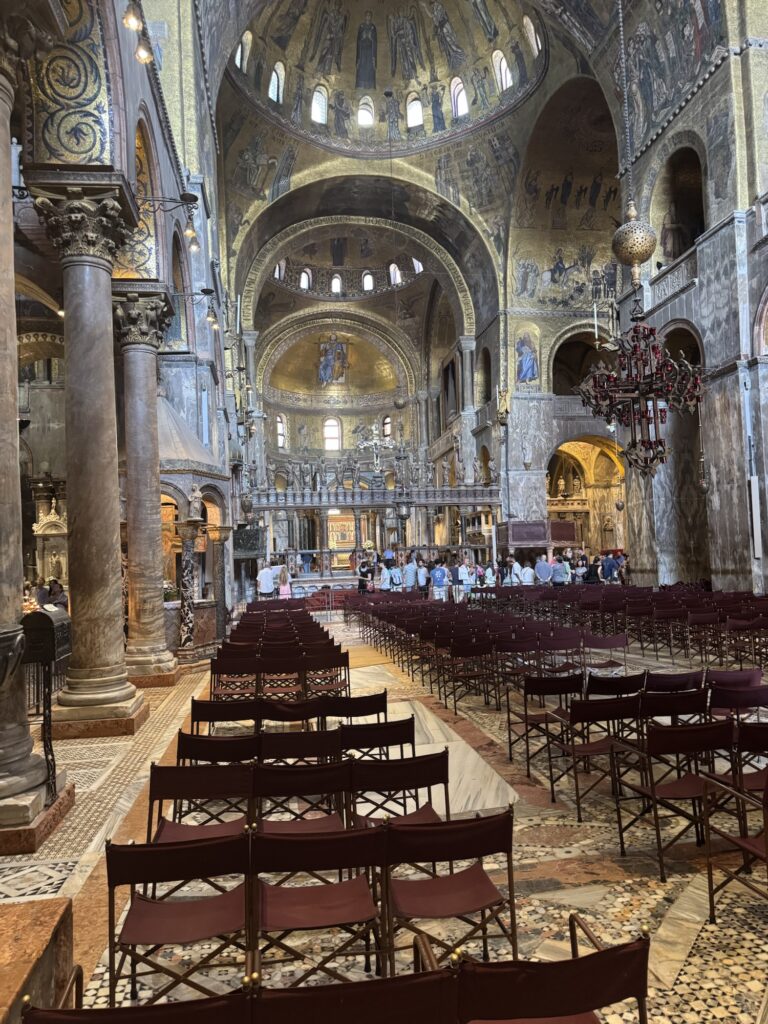
Somehow, I had never seen any pictures of the inside of St. Marks, so I had no idea what to expect. What we found was amazing: vaulted ceilings covered in gold leaf mosaics displaying just about every Bible scene imaginable. My Protestant Iconoclasm quickly gave way to my latent Catholicism—or was it aspirational Orthodoxy?
Mark’s tomb and good history
All this was perfect prologue for what we had come to see. However, unlike other relics we had seen, which were enclosed in glass so that iconoclastic Protestants, latent Catholics, and aspirational Orthodox could actually see the relic, Mark’s bones were secured in a tomb sitting under the altar. And, in the end, I think this is most appropriate.
The value of such relics is not in their veneration but that they root Christianity firmly in space-time history. Peter, disciple of Jesus wrote:
“For we did not follow cleverly devised tales when we made known to you the power and coming of our Lord Jesus Christ, but we were eyewitnesses of His majesty.”
2 Peter 1:16.
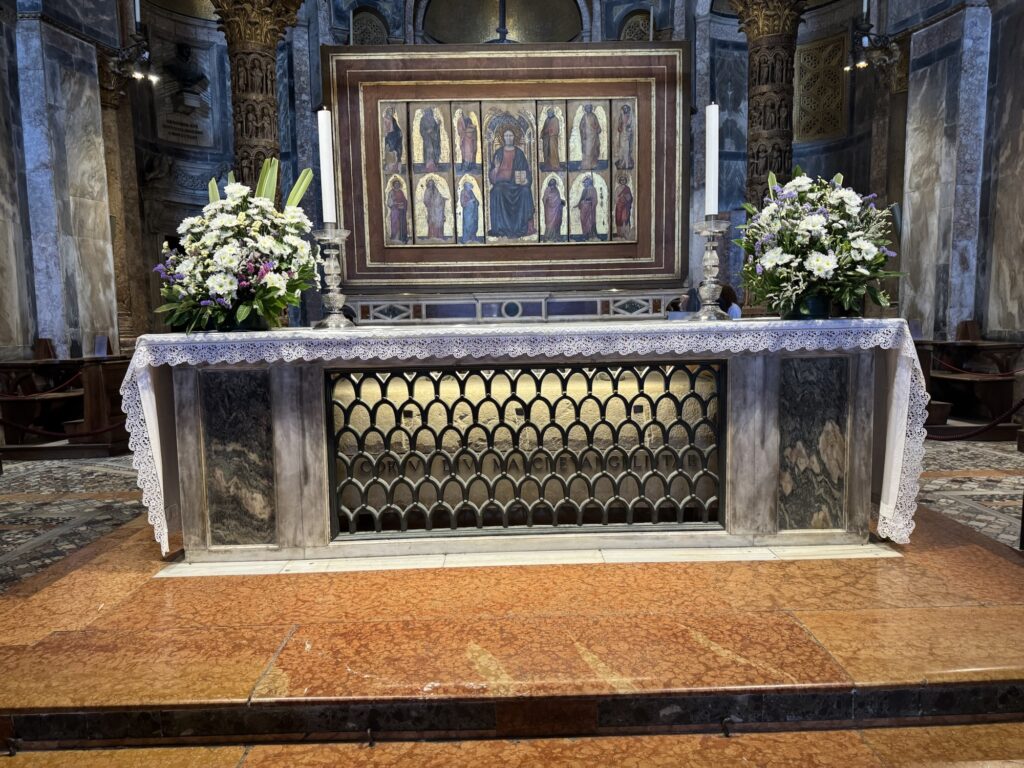
One of the reasons I don’t like using the word “faith” much is because for seculars it has become synonomous with “religion.” Instead, I use the word, “trust” because it will not be confused with the word “religion.”
What Christians believe about Jesus’ life—that He lived, was crucified, and resurrected—are historical facts. As Peter says, they are not fairy tales. We don’t need to have “faith” to believe them; we just need to be good historians. Where we need faith is to trust in Jesus for our salvation, to be obedient to Him, and to follow Him fully.
Until tomorrow. GS

